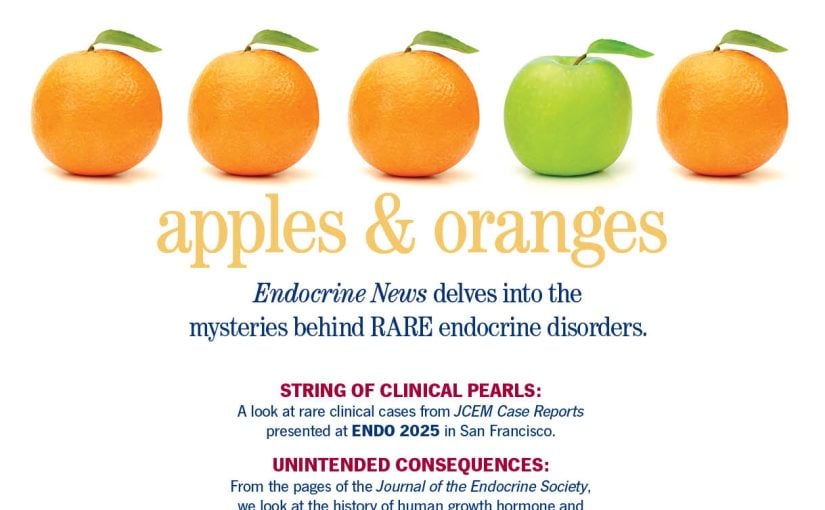Neurocrine Biosciences, Inc. and Diurnal Ltd., a Neurocrine Biosciences company, in May presented baseline data from the CAHtalyst™ Phase 3 studies of crinecerfont in adult and pediatric patients with congenital adrenal hyperplasia (CAH), and modified-release hydrocortisone (Chronocort®) data for a Phase 2 clinical study (CHAMPAIN) in participants with primary adrenal insufficiency and in a Phase 3 extension study in CAH. These data, along with several additional posters were presented at the European Congress of Endocrinology 2024 meeting in Stockholm.
CAHtalyst Phase 3 Pediatric and Adult Studies— Baseline Characteristics
Baseline characteristics of the subjects who enrolled in the CAHtalyst Pediatric Phase 3 study were presented (Poster# P225). The study enrolled 103 subjects 4 to 17 years of age with a medically confirmed diagnosis of CAH due to 21-hydroxylase deficiency, with 52% male, mean age 12 years old, and majority in Tanner stages 3-5. There was evidence indicating inadequate adrenal androgen control in many of these patients despite supraphysiologic glucocorticoid dosing. At baseline, more than a third of the participants reported comorbidities of advanced bone age, early puberty, and obesity. Hirsutism (excessive hair growth, 12%) and irregular menses (12%) were reported in females, and testicular adrenal rest tumors were identified in more than a third of males.
Baseline characteristics of 182 adults with CAH enrolled in the CAHtalyst Adult Phase 3 study were also presented. Despite supraphysiologic GC dosing, levels of adrenocorticotropic hormone, 17-hydroxyprogesterone and androstenedione (A4) were elevated at baseline, with levels of testosterone (females) and A4/testosterone (males) also elevated. Common comorbidities included anxiety, osteopenia, depression, hypertension, and hyperlipidemia. Overall, close to half of participants were overweight. Forty-seven percent of females reported a history of hirsutism (excessive hair growth) and acne (23%), and testicular adrenal rest tumors were identified in 66% of male participants.
“At baseline, many participants in the CAHtalyst Pediatric study showed clinical evidence of elevated glucocorticoid doses and adrenal androgen excess. Many exhibited obesity, advanced bone age, and early puberty, all of which can negatively impact development in childhood and adolescence,” says Eiry W. Roberts, MD, chief medical officer at Neurocrine Biosciences. “Baseline characteristics in the CAHtalyst Phase 3 study in adults saw this trend continue. Despite being in their 30s, many of the CAHtalyst Adult study participants have been diagnosed with disorders that are more common in people twice their age, including osteopenia, hypertension, and hyperlipidemia. In both studies, adrenal androgen and other steroid markers were elevated at baseline despite supraphysiologic doses of glucocorticoids, demonstrating the need for novel glucocorticoid-independent approaches to reducing adrenal androgens and supraphysiologic glucocorticoid dosing in CAH patients at all ages.”
In 2023, Neurocrine Biosciences announced top-line data from the CAHtalyst Pediatric and CAHtalyst Adult Phase 3 clinical studies evaluating the efficacy, safety, and tolerability of crinecerfont in adult and pediatric patients with CAH due to 21-hydroxylase deficiency. Data from both studies supported two New Drug Application submissions to the U.S. Food and Drug Administration in April 2024.
Phase 2 Data of Modified-Release Hydrocortisone (Chronocort®) in Primary Adrenal Insufficiency
The Phase 2 data of modified-release hydrocortisone (MRHC) in adults with primary adrenal insufficiency (CHAMPAIN study) demonstrated that participants receiving MRHC achieved a physiological morning cortisol level after four weeks of treatment (Abstract #4275, RC3.4). In the study, twice daily MRHC developed by Diurnal was compared with once-daily Plenadren (modified-release hydrocortisone) in patients aged ≥ 18 years with confirmed primary adrenal insufficiency (defined as morning pre-dose cortisol <50 nmol/L).
Of the 49 evaluable participants in the CHAMPAIN Phase 2 study with primary adrenal insufficiency, 45 achieved a physiological morning cortisol level after four weeks on MRHC compared to 2 participants after four weeks on Plenadren (P < 0.0001). The mean (standard deviation) waking cortisol was 422.85 (203.50) versus 36.98 (113.87) nmol/L, respectively.
“Treatment with modified-release hydrocortisone resulted in a greater proportion of patients with a physiological morning cortisol level than treatment with Plenadren in patients with primary adrenal insufficiency,” Roberts says. “Further analyses will test the hypothesis that waking with physiological cortisol levels improves fatigue and quality of life in these patients.”
Phase 3 Extension Study of Modified-Release Hydrocortisone (Chronocort®) in Congenital Adrenal Hyperplasia
MRHC also demonstrated potential value in improving control of CAH compared to current glucocorticoid treatment (Abstract #4271, RC3.1). In a 48-month Phase 3 extension study, MRHC-treated participants showed a reduction in the median daily hydrocortisone dose from 30mg to 20mg. Participants were considered responders when their 9:00 a.m. 17-hydroxyprogesterone level was ≤ 36 nmol/L or their androstenedione level was ≤7 nmol/L while receiving MRHC ≤ 25 mg/day.
“The number of participants achieving responder status increased after four years in the MRHC Phase 3 extension study in patients with CAH. MRHC demonstrated improved control of CAH, with an ability to closely replicate cortisol diurnal rhythm when compared to current glucocorticoid treatment,” Roberts adds.

